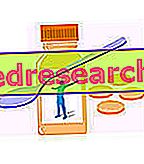Polyphenols constitute a heterogeneous group of natural substances, particularly known for their positive action on human health (not surprisingly, they are sometimes referred to by the term vitamin P). In nature, polyphenols are produced by the secondary metabolism of plants, where in relation to the chemical diversity that characterizes them they cover different roles: defense against herbivorous animals (imparting an unpleasant taste) and from pathogens (phytoalexins), mechanical support (lignin) and barrier against microbial invasion, attraction for pollinators and fruit dispersion (anthocyanins), inhibitors of competing plant growth.

SIMPLE PHENOLS: phenolic acids, coumarins and benzoic acids belong to it. Their condensation can give rise to polymers such as lignin; they are widely distributed in foods and beverages (such as coffee caffeic acid).
TANNINS: two categories belong to the group of tannins: condensed tannins and hydrolysable tannins. The former are also called proanthocyanidins, because by hydrolysis with strong acids they give anthocyanidins. The latter are heterogeneous polymers containing phenolic acids (eg Gallic acid) and simple sugars.
FLAVONOIDS: flavonoids are the largest group of natural phenols and all have the phenyl-benzopyrone or flavonone as a reference structure. Structural variations in the rings allow the flavonoids to be divided into different families: flavonols, flavones, isoflavones, anthocyanins and others.
Diet, health and polyphenols
The contribution of polyphenols in the human diet varies enormously in relation to the type, quantity and quality of vegetables consumed. In any case, the assumption is generally considerable, in the order of the gram / day, precisely because we are talking about the most represented antioxidant molecules of the vegetable kingdom. Polyphenols abound above all in fresh fruit and vegetables, but also in tea, wine, cocoa and derivatives. On the other hand, cooking considerably reduces the polyphenolic content of the food, so it is important to consume fresh foods or possibly rely on boiling (better still with steaming), avoiding high temperatures.
General actions of polyphenols
In nature we find many types of polyphenols, characterized by a marked structural and functional variability. In principle, however, the activity of polyphenols can be summarized in the following points:
ANTIOXIDANT: protect cells from damage caused by free radicals, which develop with normal cellular metabolism and due to stressful events, such as radiation, smoke, pollutants, UV rays, emotional and physical stress, chemical additives, viral and bacterial attacks, etc. . |
ANTICANCEROGENICA: in general they show an impact on the initiation step of cancer development, protecting cells against direct attack by carcinogens or altering their activation mechanism (in vitro). This scientific evidence explains the classic epidemiological evidence that there is a correlation between fresh vegetable consumption and reduced incidence of some types of cancer (skin, lung, stomach, esophagus, duodenum, pancreas, liver, breast and colon). |
ANTI-THEROGENIC: it is widely reported that the oxidation of lipids and in particular of LDL is the cause of the development of atherosclerosis and related diseases (stroke, thrombosis and cardiovascular diseases in general, the first cause of death in Western countries). The main mechanism is the reduction of platelet coagulation and LDL; other mechanisms are the inhibition of lipoprotein oxidation, the radical scavenger action and the modulation of eicosanoid metabolism. |
| ANTI-INFLAMMATORY: inhibition on the arachidonic acid cascade |
| ANTIBACTERIAL and antiviral |
Concrete examples
QUERCETIN: predominant polyphenol in onions, but present in good quantities also in other vegetables; inhibits platelet aggregation in vitro and reduces the synthesis of thromboxane (antithrombotic action). Possible antitumor activity.
RESVERATROL: important polyphenol present in red wine, in the skin of grapes and in other vegetables, including peanuts; inhibits LDL oxidation and platelet aggregation, protecting the body from cardiovascular diseases (antithrombotic, anti-inflammatory, anti-atherogenic and vasorelaxing action). Possible antitumor, estrogen-like and antiviral action.
ISOFLAVONI: polyphenols characteristic of soy and other vegetables, such as red clover. They modulate the metabolism of estrogens in the body behaving, as appropriate, as anti or pro-estrogenic substances; they also seem to prevent some forms of cancer, such as breast and prostate.
CATECHINE: tea polyphenols with a powerful antioxidant action.
FOODS PARTICULARLY RICH IN POLYPHENOLS: tea (in particular black and green), cocoa and dark chocolate, berries, citrus fruits, cherries, pollen, cold-pressed olive oil, garlic, onion, radicchio, cabbage, broccoli and tomato . The main benefit to human health deriving from the ingestion of these foods appears to be an expression of the wide and varied presence of phytonutrients; this also explains why the protective role of food supplements that promise to meet the same expectations, providing only one or a few phytochemicals at high dosages, is controversial.
Finally, it should be noted that the concentration of polyphenols and phytonutrients in the same food varies in general - often to a considerable extent - in relation to cultivation techniques, the degree of maturation and the time elapsed between collection and consumption; it is known, for example, that resveratrol is produced by plants in response to exogens, in particular fungal infections and UV rays.
To fill up with polyphenols, remember ...
Diversify the vegetables in the diet, consuming a wide variety of fresh foods every day, then in season (preservation reduces the polyphenol content of the food); add aromatic herbs instead of salt and pepper; prefer extra virgin olive oil cold pressed and raw vegetables; when this is not possible, avoid drastic cooking methods, preferring sober cooking methods such as steaming; finally, supplementing one's diet with a small amount of dried fruit is very useful for increasing the intake of polyphenols and essential fatty acids.



